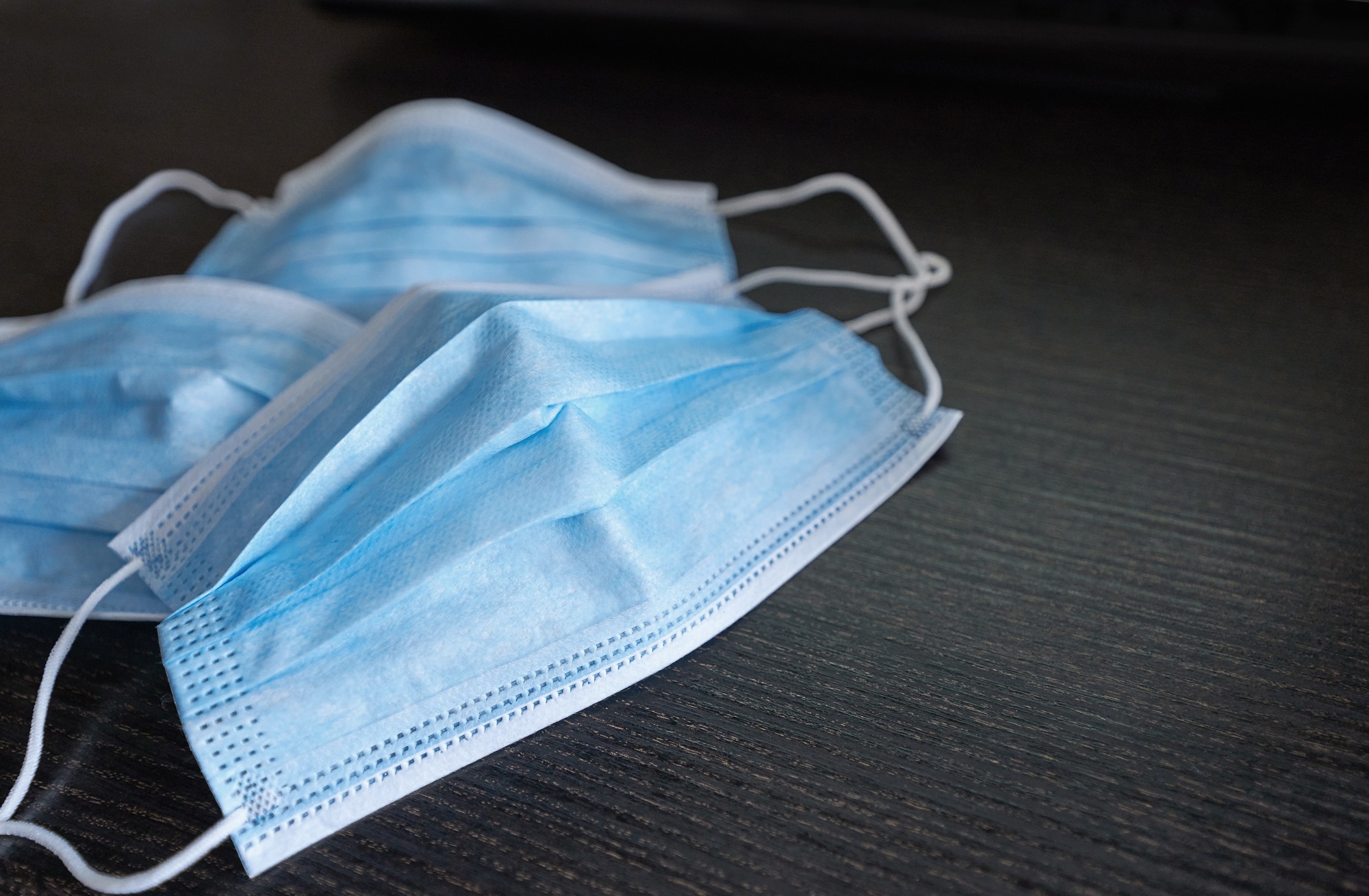HealthDay News — Good fit is important for maximizing mask performance to reduce exposure to severe acute respiratory syndrome coronavirus 2 (SARS-CoV-2) respiratory droplet particles, according to research published in the Feb. 10 early-release issue of the U.S. Centers for Disease Control and Prevention Morbidity and Mortality Weekly Report.
John T. Brooks, M.D., from the CDC COVID-19 Emergency Response Team, and colleagues conducted experimental simulations using pliable elastomeric source and receiver headforms to assess the extent to which two modifications could improve the fit of medical procedure masks and reduce the receiver’s exposure to an aerosol of simulated respiratory droplet particle of the size considered most important for SARS-CoV-2 transmission. The modifications were wearing a cloth mask over a medical procedure mask and knotting the ears of a medical procedure mask, then tucking in and flattening the extra material close to the face.
The researchers found that the cumulative exposure of the unmasked receiver was reduced by 82.2 and 62.9 percent, respectively, by adding a cloth mask over the source headform’s medical procedure mask or knotting and tucking the medical procedure mask. The reductions were 83.0 and 64.5 percent, respectively, when the source was unmasked and receiver fitted with a double mask or the knotted and tucked medical procedure mask, and 96.4 and 95.9 percent, respectively, when the source and the receiver were both fitted with double masks or knotted and tucked masks.
“Continued innovative efforts to improve the fit of cloth and medical procedure masks to enhance their performance merit attention,” the authors write


Legal Steroids: What Works, What Doesn’t, Precautions, Alternatives
What do legal steroids work; Kelley, For?
Legal steroids are designed to aid muscle growth,
fat loss, and performance enhancement. They work by mimicking the effects of
anabolic steroids without the latter’s illegal status.
Potential Benefits
Muscle gain
Fat loss
Increased strength
Enhanced recovery
What Don’t Legal Steroids Work For?
While legal steroids can be effective, they don’t work for
everyone. Factors like genetics, diet, and exercise play significant roles in their effectiveness.
Limitations
Results may vary
Cannot exceed natural limits
Require a supportive lifestyle
Precautions to Consider
Before using legal steroids, consider these precautions:
Health Risks
Hormonal imbalances
Acne and hair loss
Dermatological issues
Legal and Ethical Use
Ensure compliance with local laws and ethical usage guidelines to avoid legal trouble.
Alternatives to Legal Steroids
If legal steroids aren’t suitable for you, consider these alternatives:
Natural Supplements
Protein supplements
Balanced diets
Exercise programs
Consult Professionals
Always consult with a healthcare professional before starting any new regimen.
Conclusion
Legal steroids can be beneficial but come with considerations.
Always prioritize health, safety, and ethical practices when deciding to use
them.
Legal Steroids: Do They Work and Are They Safe?
Are you considering using legal steroids to enhance
your fitness goals? While they can offer
benefits, it’s crucial to understand how they work, their
limitations, and the precautions necessary.
### Health Conditions
Legal steroids are often used by individuals looking to build muscle
mass or improve physical performance. These conditions include:
– Muscle wasting due to disease or aging.
– Reduced strength in older adults.
– Recovery after surgery or injury.
### Condition Spotlight
– **Muscular Dystrophy**: Legal steroids can help maintain muscle
mass in patients with this condition.
– **Healthy Aging**: They may aid in maintaining muscle function and preventing
age-related decline.
### Why You Shouldn’t Use Anabolic Steroids
While legal alternatives exist, anabolic steroids are risky.
They can lead to severe health issues like liver damage,
cardiovascular problems, and psychological
effects like paranoia or aggression.
### The Takeaway
Legal steroids can be safe when used responsibly, but they’re
not for everyone. consult with a healthcare professional
before deciding.
### Alternative Ways to Build Muscle Mass and Strength
If you’re cautious about legal steroids, consider these alternatives:
#### Creatine
A proven supplement that boosts strength and endurance.
#### Matrix Metalloproteinase (MMP) Inhibitors
These can help maintain muscle mass during use.
#### Dimethylamylamine (DMAA)
Known for its ability to enhance energy and focus during workouts.
### Create a Good Weight-Training Routine
Start with compound movements like squats and deadlifts, incorporating splits or
circuits into your routine.
### Follow a Healthy, Muscle-Friendly Diet
Focus on protein-rich foods, sufficient calorie intake, and stay hydrated.
Consider consulting a nutritionist for a personalized plan.
### Work with a Personal Trainer
Professional guidance can help you stay motivated and ensure proper form.
### Use a Fitness App
Track your progress and create routines with apps like MyFitnessPal or Freeletics.
### Lessons from Experts
Experts advise that while legal steroids may work, natural
methods are safer and more sustainable in the long term.
### This Just In
Recent studies highlight the potential benefits of
legal steroids but also emphasize the need for caution and professional oversight.
### Top Reads
Explore articles like “The Best Protein Powders for Muscle Building” or “How to Start a Weightlifting Routine.”
### Video Series
Watch guides on how to use legal steroids effectively, with tips on dosage and safety.
### Find Your Bezzy Community
Join forums or groups to connect with others who share your fitness
goals.
### Follow Us on Social Media
Stay updated on the latest in fitness trends and reviews.
—
This article provides a comprehensive overview of legal steroids, their benefits, risks, and alternatives.
Always prioritize your health and consult with a healthcare professional before making any decisions.